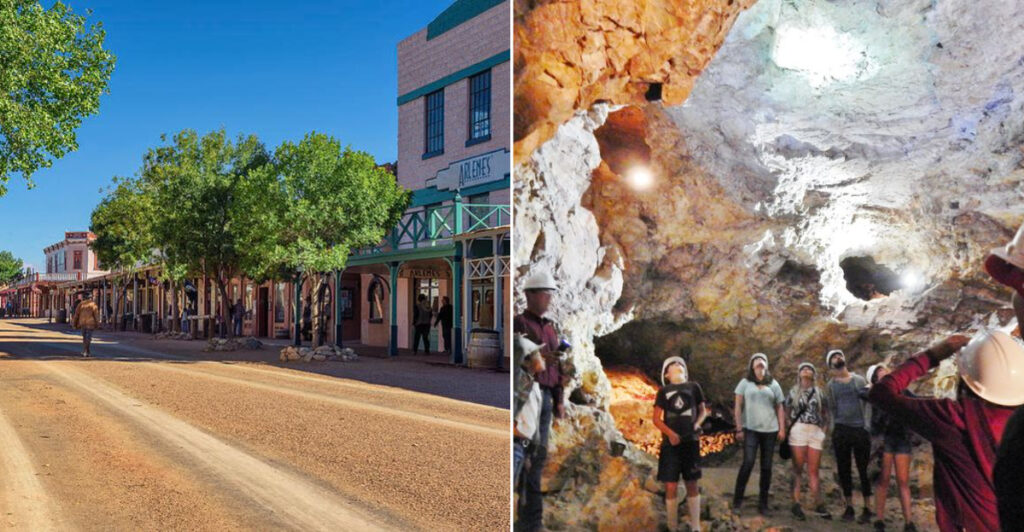Tombstone, Arizona, is a town steeped in history and mystery. Known for its silver mines and ghostly tales, this town captures the imagination of anyone interested in the Wild West and its lingering spirits. Here are ten fascinating facts about Tombstone that reveal its storied past and eerie present.
1. It Was Born Out of a Joke
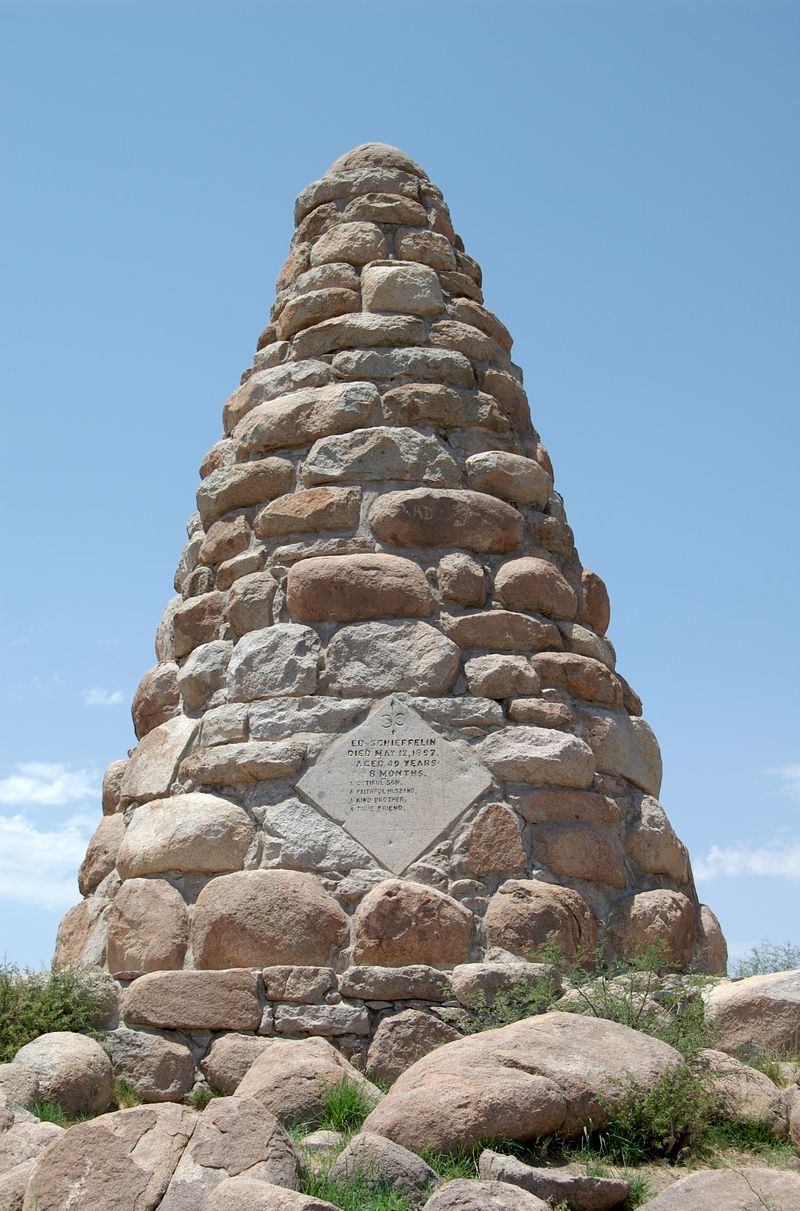
In 1877, prospector Ed Schieffelin was warned that he would find nothing but his own tombstone in the perilous Arizona desert. Despite the ominous advice, Schieffelin persisted, and when he struck silver, he humorously named his claim “Tombstone.” This ironic naming choice stuck, and thus the town of Tombstone was born.
The discovery led to a silver boom that transformed the area from a barren wasteland into a bustling mining hub. Tombstone quickly grew into one of the West’s wildest towns, attracting miners, merchants, and outlaws alike. The town’s name serves as a reminder of its founders’ tenacity and dark humor.
Schieffelin’s gamble paid off, as Tombstone became an emblem of fortune and risk. Today, the town’s origins continue to intrigue those who visit this legendary place. Did you know? Schieffelin Hall, built by Ed’s brother, is still a cultural centerpiece.
2. A Silver Boomtown Overnight
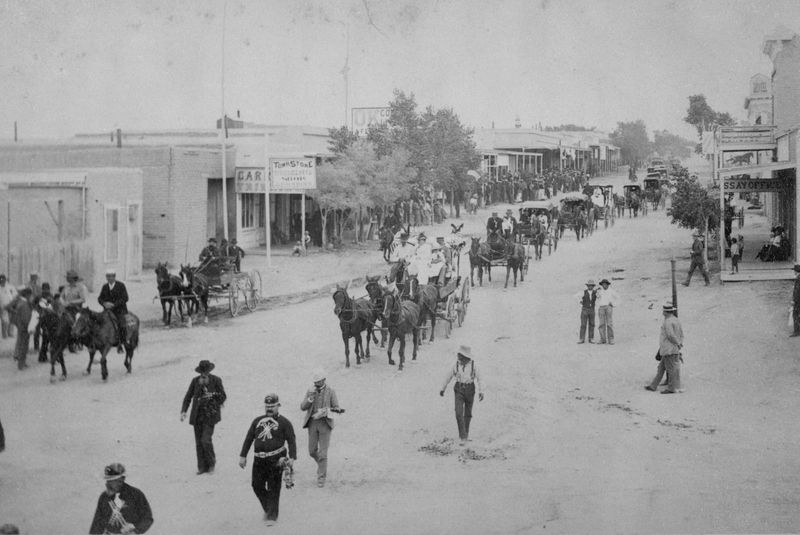
The 1880s saw Tombstone transform into a silver boomtown almost overnight. With mines producing over $85 million in silver, the town’s wealth rapidly increased. Saloons sprang up like wildflowers, offering entertainment to the influx of miners and adventurers.
Tombstone’s rapid growth attracted a mix of characters, from ambitious entrepreneurs to notorious outlaws. The town’s vibrant yet lawless atmosphere made it a beacon of opportunity and danger in equal measures. Amidst the chaos, fortunes were made and lost, with silver being the ultimate prize.
As the town flourished, so did its reputation for excitement and excess. The streets buzzed with activity, creating an environment where possibility loomed large. This period of prosperity left an indelible mark on Tombstone, cementing its place in Wild West lore. Curious fact: Tombstone’s population once swelled to over 14,000 during its peak!
3. The Infamous Gunfight at the O.K. Corral
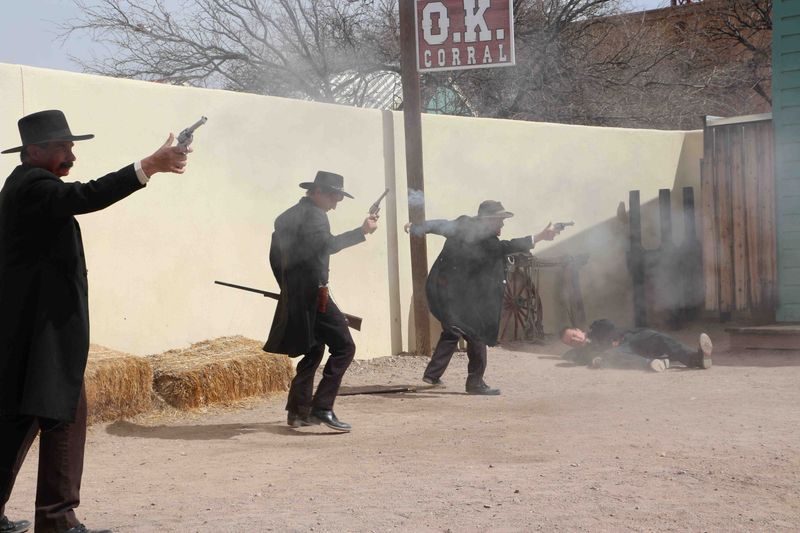
October 26, 1881, remains a crucial date in Tombstone’s history due to the infamous gunfight at the O.K. Corral. Lawmen Wyatt Earp, Doc Holliday, and the Earp brothers faced off against the Clantons and McLaurys in a shootout that lasted a mere 30 seconds.
Despite its brevity, the gunfight has become legendary, embodying the lawlessness and violence of the Wild West. The confrontation was the result of rising tensions and personal vendettas, culminating in a violent clash that left three men dead.
The O.K. Corral shootout’s legacy endures, immortalized in numerous films and books. Its notoriety draws visitors who wish to walk the same streets where these historic figures once stood. Did you know? The gunfight actually took place six doors down from the O.K. Corral, but the name stuck!
4. Haunted Hotspot: The Bird Cage Theatre
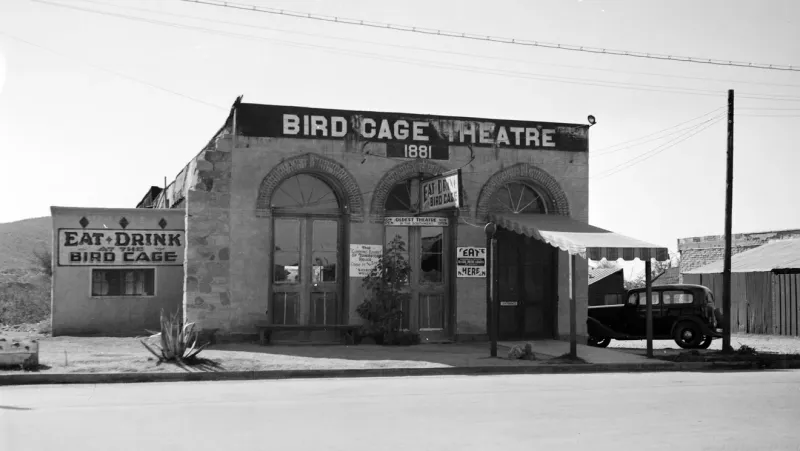
Known as one of America’s most haunted places, the Bird Cage Theatre in Tombstone offers tales as chilling as its name. Opened in 1881, this establishment once ran 24/7, providing gambling, drinking, and more nefarious activities to its patrons.
The theatre witnessed at least 26 documented deaths, adding to its haunted reputation. Visitors often report seeing apparitions dressed in 1800s attire, hearing phantom music, and experiencing unexplained cold spots. Some even claim to catch the scent of cigar smoke in this non-smoking venue.
Its haunted history enhances the allure of the Bird Cage Theatre, making it a must-visit for ghost hunters and history enthusiasts alike. Its eerie charm continues to captivate, keeping the spirits of its past very much alive. Fun fact: The theatre’s basement once stored bodies during freezing winters!
5. Tombstone Burned — Twice
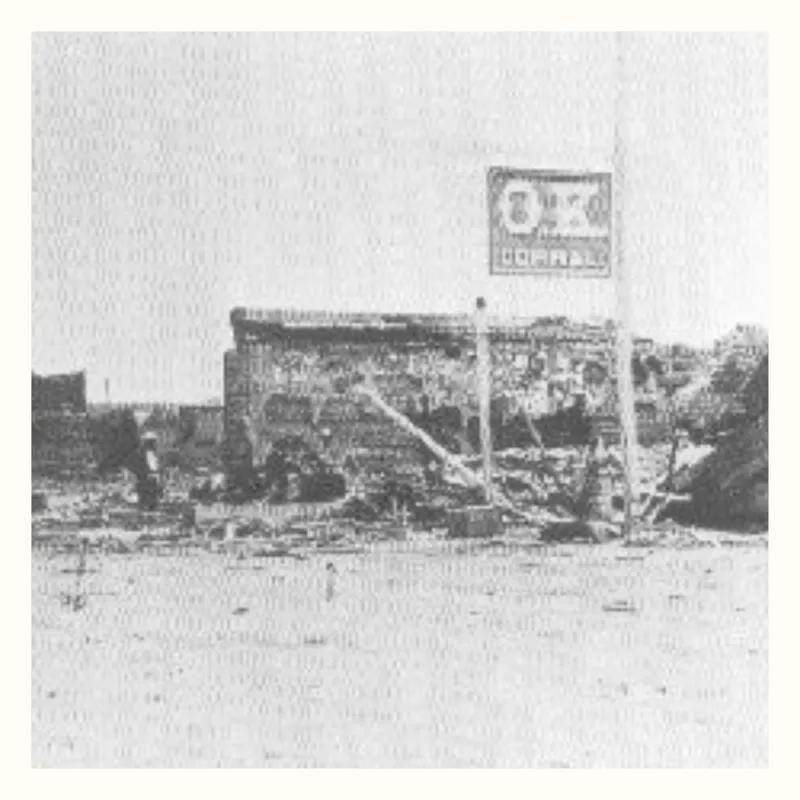
Tombstone’s resilience is legendary, earning it the nickname “The Town Too Tough to Die,” especially after enduring two devastating fires in the early 1880s. In 1881 and again in 1882, flames ravaged the town, destroying large parts of its bustling downtown.
The fires resulted in significant loss, yet the townspeople’s determination to rebuild was unwavering. Each time, the community rose from the ashes, reconstructing with a steadfast spirit. This ability to bounce back became a defining characteristic of Tombstone.
Today, the rebuilt structures stand as a testament to the town’s enduring strength and fortitude. The fires may have reshaped Tombstone’s landscape, but they also forged an unbreakable community bond. Did you know? Despite the destruction, no lives were lost in the 1882 fire.
6. A Town of Saloons and Vice
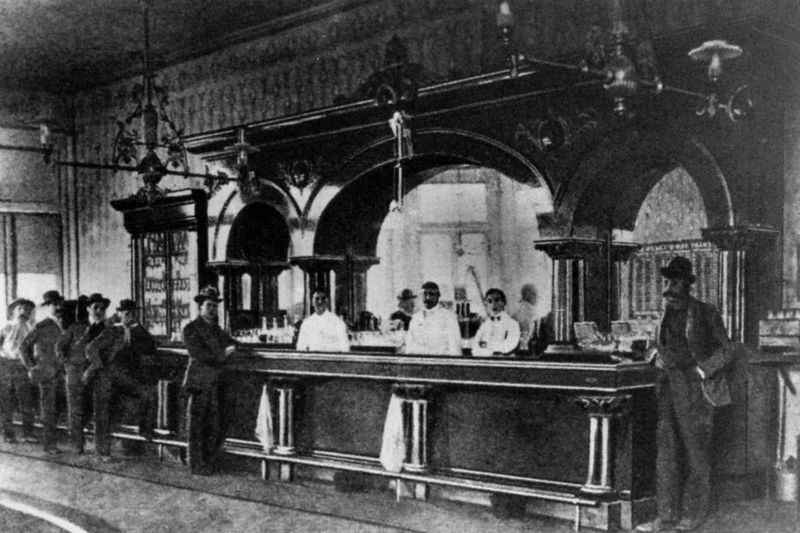
At its peak, Tombstone boasted over 100 saloons for just a few thousand residents, illustrating its reputation as a town of vice and revelry. These establishments offered more than just drinks; they were centers of social life, gambling, and frequent barroom brawls.
The saloons catered to a diverse clientele, from miners to outlaws, creating an eclectic and sometimes volatile mix. The constant flow of whiskey and the thrill of poker games added to the town’s wild charm, making every night unpredictable.
Tombstone’s saloons are part of its enduring legacy, capturing the untamed spirit of the Wild West. Even today, visitors can experience reenactments and walk through these historic establishments. Interesting tidbit: The Crystal Palace Saloon still serves thirsty patrons today!
7. Historic Streets You Can Still Walk
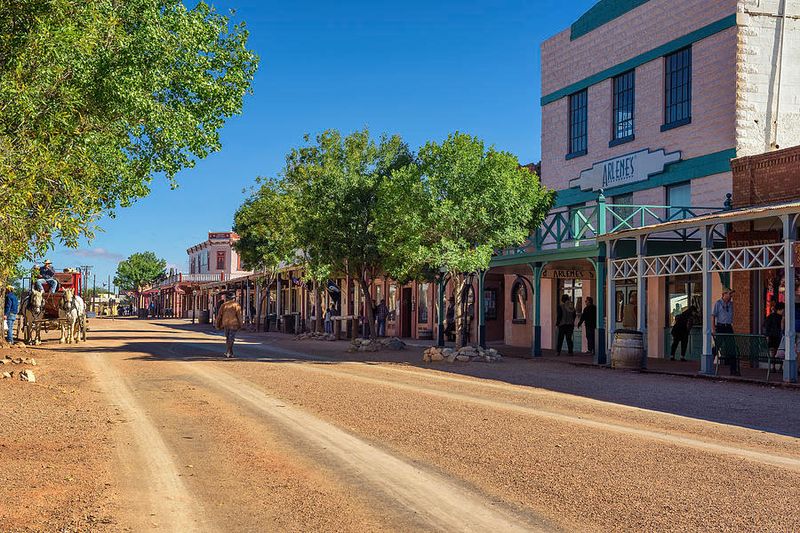
Tombstone’s Allen Street remains a living museum, preserved as it was in the 1880s, offering visitors a tangible connection to its storied past. Walking along this historic thoroughfare, one can almost hear the echoes of cowboys and miners bustling about.
Actors in period dress add to the atmosphere, performing daily gunfight reenactments that capture the excitement and danger of the era. The street is lined with historic buildings, each with its own tale to tell, from saloons to general stores.
The preservation of Allen Street serves as a gateway to understanding Tombstone’s vibrant history, providing a unique blend of education and entertainment. Fun fact: The street’s original wooden sidewalks are still in place!
8. The Cemetery Tells the Town’s Tale
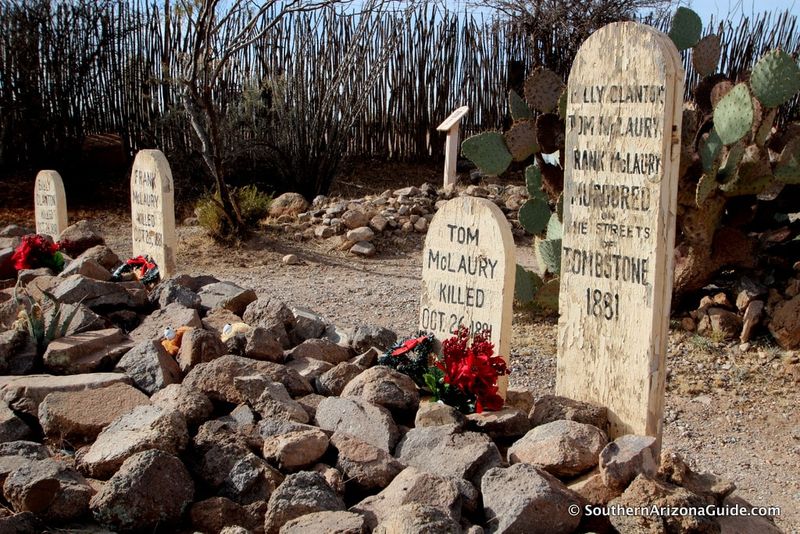
Boothill Graveyard, established in 1878, tells the tale of Tombstone’s rough-and-tumble roots with its weathered tombstones and eerie ambiance. This cemetery is the final resting place for many of the town’s infamous outlaws and lawmen, including those from the O.K. Corral shootout.
The graveyard offers more than just a resting place; it provides a glimpse into the lives and deaths that shaped Tombstone’s history. Names like “Two Gun Pete” and “Unknown” on the markers evoke stories of adventure and peril.
Visitors often report strange lights and noises, adding to the graveyard’s mystique. Boothill stands as a haunting reminder of a past filled with grit and determination. Did you know? Some tombstone inscriptions include witty epitaphs reflecting the town’s dark humor.
9. Hollywood’s Western Muse

Tombstone’s rich history has made it a favorite muse for Hollywood, inspiring numerous films and shows. Among the most notable is the 1993 movie “Tombstone,” starring Kurt Russell as Wyatt Earp and Val Kilmer as Doc Holliday.
The film captures the grit, glory, and gunpowder that defined the town’s tumultuous past. Its success helped cement Tombstone’s place in popular culture, bringing the Wild West legend to a wider audience.
With its dramatic storytelling and iconic performances, “Tombstone” continues to captivate audiences, keeping the town’s legacy alive on screen. Curious note: The film’s wider context helped renew interest in the real Tombstone, boosting tourism.
10. You Can Still Visit the Mines

Visitors to Tombstone can step back in time with tours of the Goodenough and Toughnut Mines, experiencing firsthand the harsh conditions miners faced. These tours reveal the hard labor and perseverance required to extract silver from the earth.
Walking through the narrow tunnels, one gains an appreciation for the miners’ endurance amidst the dust and darkness. Guides provide insight into the techniques and tools used during Tombstone’s silver boom, painting a vivid picture of life underground.
The mines remain a testament to the town’s origins and the quest for wealth that drove its development. Touring them offers a unique glimpse into the challenges and triumphs of the mining era. Did you know? The Goodenough Mine is still privately owned and operated!

